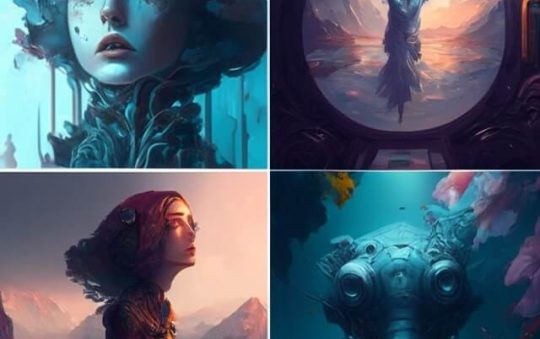Building a Optimized for 3D Animation pc build guide Workflows
Are you an aspiring animator looking to build a PC that can handle the demands of 3D animation work? Look no further! In this guide, we will walk you through the process of building a powerful and efficient 3d animation pc build guide PC that is optimized specifically for 3D animation workflows. From selecting the right components to optimizing your software, we’ve got you covered. So, let’s dive in and discover how to build your ultimate 3D animation PC!
A Comprehensive 3D Animation PC Build Guide
Building a PC for 3D animation requires careful consideration of various aspects, such as CPU, GPU, RAM, storage, and more. To help you navigate through this process, we have put together this comprehensive guide. Whether you are a beginner or an experienced animator, this guide will provide you with all the information you need to create a high-performing and reliable PC for your animation projects.
Selecting the Right CPU
The Central Processing Unit (CPU) is the brain of your PC and plays a crucial role in 3D animation workflows. When choosing a CPU for animation purposes, you should prioritize high core count and clock speed. This ensures that your PC can handle complex calculations and renderings efficiently. Popular choices for animation CPUs include the Intel Core i7 and i9 series and the AMD Ryzen 7 and 9 series.
Intel Core i7 vs. AMD Ryzen 7: Which One to Choose?
Both the Intel Core i7 and AMD Ryzen 7 offer excellent performance for 3D animation work. The choice between them ultimately comes down to personal preference and budget. The Intel Core i7 processors may have a slight advantage in single-core performance, which can be beneficial for certain animation tasks. On the other hand, AMD Ryzen 7 processors tend to offer better multi-threaded performance, making them ideal for complex animations and rendering.
When choosing between Intel and AMD, it is important to consider your specific workflow 3d animation pc build guide and software requirements. Some animation software may be optimized for either Intel or AMD processors. Therefore, it is recommended to research and consult with other animators or online communities for insights and recommendations.
Powerful Graphics for Smooth Rendering
In 3D animation, a powerful Graphics Processing Unit (GPU) is essential for smooth real-time rendering and accurate previewing of your animations. The GPU takes on the heavy lifting of rendering complex graphics and animations, allowing for faster and more efficient workflows. When selecting a GPU, look for models with a high number of CUDA cores or Stream Processors, as well as a considerable amount of VRAM.
NVIDIA GeForce RTX 30 Series: The Perfect Companion for 3D Animation
The NVIDIA GeForce RTX 30 series is renowned for its exceptional performance and advanced features, making it an excellent choice for 3D animation workflows. The RTX 30 series GPUs are built on NVIDIA’s latest Ampere architecture, providing significant improvements in rendering speeds and ray tracing capabilities. With features like real-time ray tracing and AI-accelerated rendering, these GPUs can greatly enhance your animation experience.
Ample RAM for Smooth Workflow
Random Access Memory (RAM) is crucial for running multiple applications simultaneously and keeping your animation software running smoothly. In 3D animation, where working with complex scenes and high-resolution textures is common, having ample RAM is essential. Aim for at least 32GB of RAM to ensure a seamless workflow without any lags or crashes.
DDR4 vs. DDR5 RAM: Which One to Choose?
Currently, DDR4 RAM is the most widely used and readily available option for PC builders. However, DDR5 RAM is expected to hit the market soon, promising faster speeds and higher capacities. While DDR5 RAM may offer enhanced performance, its availability and compatibility with current motherboards may be limited initially. Therefore, for the time being, DDR4 RAM is still a reliable and suitable choice for 3D animation workstations.
Fast and Reliable Storage Solutions
When it comes to storage for your 3D animation projects, you need a combination of speed and reliability. Solid State Drives (SSDs) are the recommended choice for storing your operating system, software, and frequently accessed files, as they offer faster read and write speeds compared to traditional Hard Disk Drives (HDDs). Additionally, consider adding a larger capacity HDD for long-term storage of large animation files and backups.
NVMe SSDs: Lightning-Fast Storage for Your Animation Projects
NVMe SSDs have revolutionized storage capabilities with their lightning-fast speeds and efficient data transfer rates. These SSDs utilize the PCIe interface, allowing for significantly faster read and write speeds compared to traditional SATA-based SSDs. With NVMe SSDs, you can experience lightning-fast boot times, quick file access, and seamless playback of your 3D animations.
Optimize Your Software for Enhanced Performance
Apart from choosing the right hardware components, optimizing your animation software can significantly enhance the performance of your PC. Most animation software offers various settings and preferences that can be adjusted to maximize performance. Experiment with different rendering settings, cache configurations, and GPU utilization options to find the optimal balance between quality and speed.
GPU Rendering: Making the Most of Your Graphics Card
Utilizing GPU rendering can provide a substantial boost to your animation workflow. Many animation software applications, such as Blender and Autodesk Maya, offer GPU rendering options that take advantage of the parallel processing capabilities of modern GPUs. By enabling GPU rendering, you can drastically reduce rendering times and achieve real-time visuals while working on complex scenes.
Conclusion:
Building a PC optimized for 3D animation workflows 3d animation pc build guide requires careful consideration of various hardware components such as CPU, GPU, RAM, and storage. Choosing the right components and optimizing your software settings can greatly enhance your animation experience and productivity. By following this guide and exploring your options, you can embark on the journey of creating stunning and immersive 3D animations with a powerful and efficient PC. Happy animating. To more information, visit Techy Robo.


